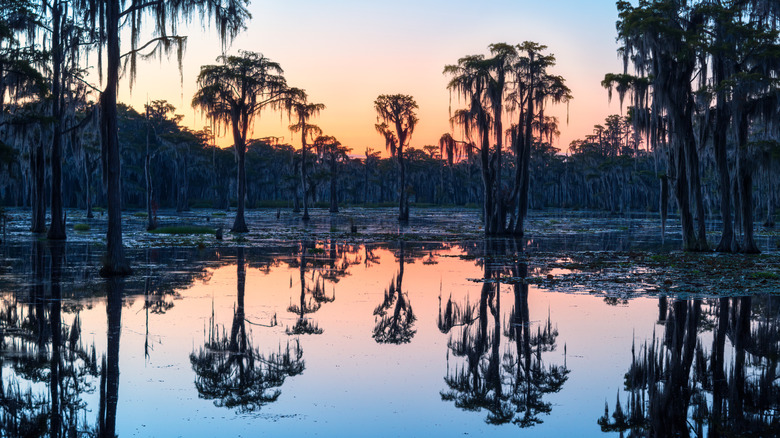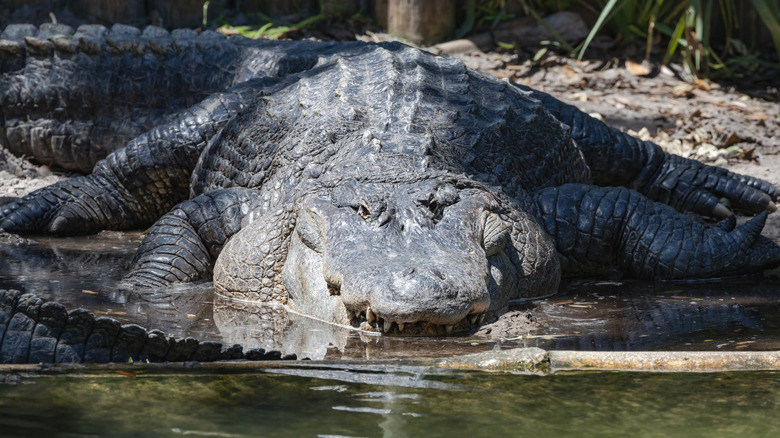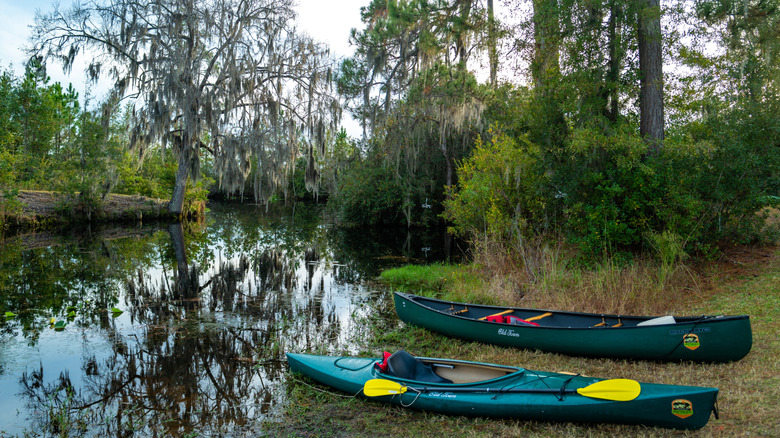The South's Largest Wilderness Area Is An Underrated Gator-Filled Paddling And Fishing Paradise
America's largest blackwater swamp is also the South's most expansive protected wilderness area. For paddlers and anglers, this remote waterscape offers a rare chance to escape the throngs of humanity and experience a truly wild country. The Okefenokee National Wildlife Refuge, situated on the Georgia-Florida border near the town of Folkston, Georgia, gives visitors the opportunity to see what this lightly visited corner of the Southeast was like before European settlers arrived and changed the landscape altogether.
For kayakers, canoeists, and enterprising anglers, this underrated watery wilderness offers a chance to come face-to-face with some of the South's most charismatic wildlife. At any given time, there are more than 10,000 American alligators in Okefenokee, but visitors may also encounter black bears, river otters, and rare and protected birds, like red-cockaded woodpeckers and wood storks. Using the refuge's well-maintained water trails, anglers can pursue sunfish like flyers and warmouth, and they can tangle with more toothy targets, like chain pickerel and the prehistoric bowfin. Unlike other unique destinations in Georgia like Sapelo Island, a visit to the Okefenokee National Wildlife Refuge is a journey back in time to a swath of wilderness that, even today, remains largely intact.
Okefenokee sources two great American rivers
The Okefenokee National Wildlife Refuge could be considered a giant natural rain barrel. It's fed almost solely by precipitation in southern Georgia, and all that water soaks through the tannic leaf litter of the region and drains into the swamp. The tannins in the region's decaying plants give the swamp's water its distinctive color, like a strong cup of coffee. As the swamp fills, it spills over a pair of sand ridges that help contain it and serve as the headwaters for two great American rivers: the St. Mary's River that flows east to the Atlantic Ocean and the Suwannee River that flows southwest before arriving at the Gulf of Mexico near one of Florida's more secret coastal destinations.
The Okefenokee Swamp was protected as a wildlife refuge by President Franklin D. Roosevelt in 1937, which put an end to logging and development in the swamp. Today, the Okefenokee National Wildlife Refuge encompasses about 700 square miles and contains the 354,000-acre Okefenokee Wilderness Area. In December 2024, the U.S. Department of the Interior proposed expanding the refuge's borders by about 22,000 acres to improve habitat for rare plants and animals. The proposal would also allow adjacent landowners on the fringes of the swamp to voluntarily sell land to enhance the protection of the refuge's fragile ecosystem. The refuge is also a candidate for protection under the United Nations Ecological, Scientific and Cultural Organization (UNESCO) as a World Heritage Site.
Explore Okefenokee's expansive paddling trails
Thanks to the swamp's protective status, the U.S. Fish and Wildlife Service, which administers the wildlife refuge, has steadily improved access to it over the years. From three distinct entrances — the official refuge entrance on the east side near Folkston, the north side through Okefenokee Swamp Park and Adventures, and on the west side at Stephen C. Foster State Park — paddlers can access about 120 miles of canoe and kayak trails. Visitors can rent canoes, kayaks, and even skiffs to get around these trails that wind through cypress forests and swampy prairies from one end of the refuge to the other. With proper permits, boaters can even stay overnight in one of several floating hammocks in the refuge that offer elevated shelters.
For anglers, the refuge provides a very unique landscape and the chance to move through the swamp's wild country in search of distinctive fish, like the long-nose gar and the air-breathing bowfin. The swamp has long been a fishing destination for regional anglers, and today, it's known as a fly-fishing destination for those aggressive bowfin that offer a challenging battle. Despite the alligator population that rivals other notable gator-viewing destinations in Florida, one incredible statistic stands out. According to refuge visitor service manager Veronica Kelly, there has never been a fatal alligator attack on humans inside the refuge. That said, while a visit to the refuge is an amazing experience, swimming in the swamp is not a great idea!


